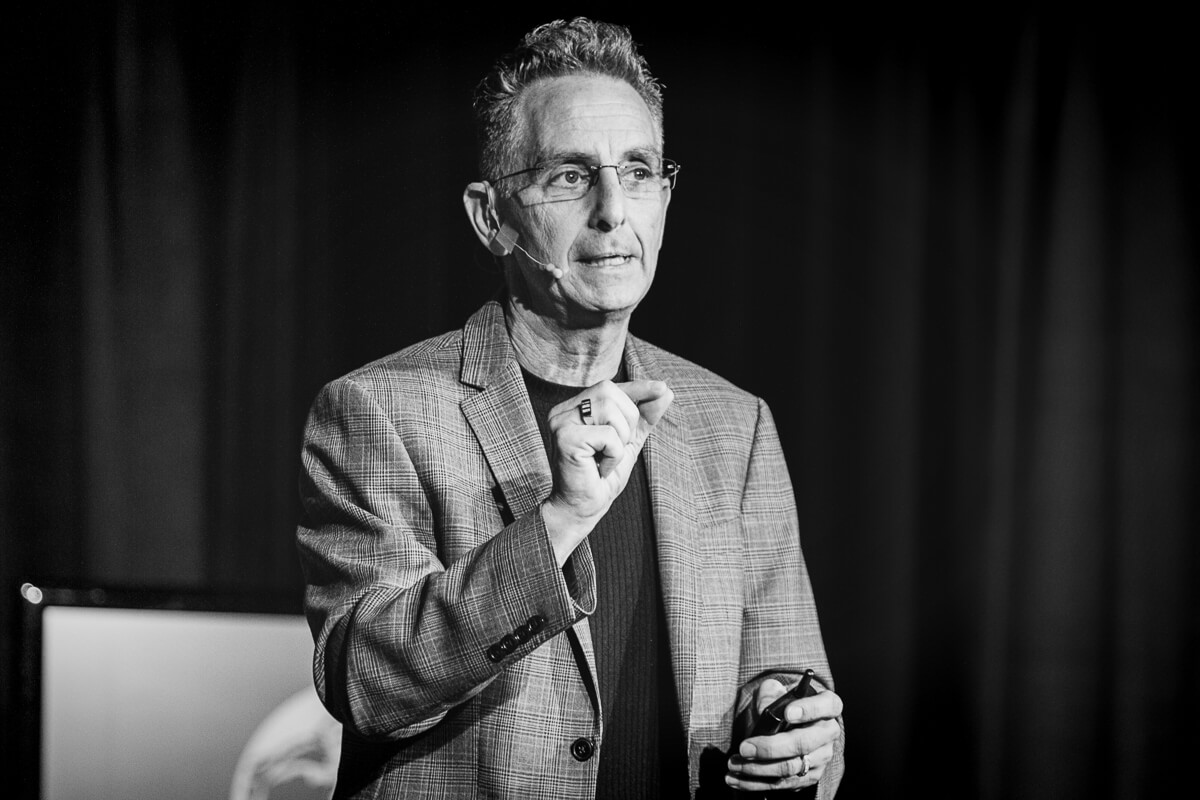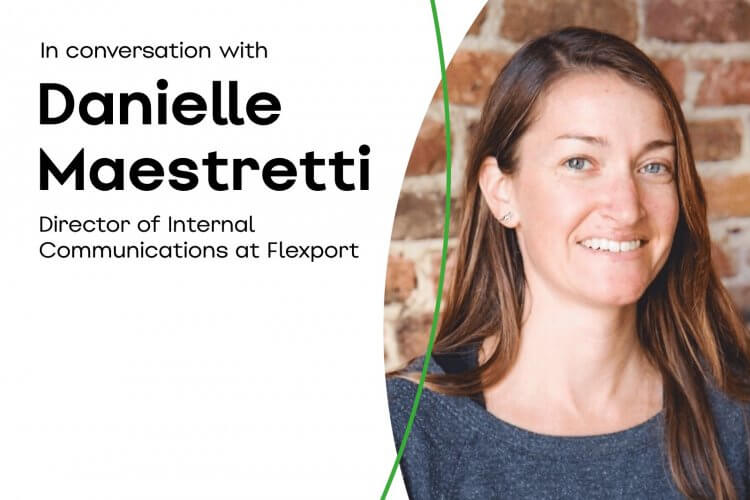Nathan Gold is a professional coach training people around the world to deliver more compelling presentations and memorable product demonstrations. He has an impressive 15.000 presentations and 10.000 hours of professional coaching under his belt.
Nathan understands the crucial role of the audience and he stresses the fact that without the audience, speakers wouldn’t have a job! Therefore, he trains his clients to present as if they were performing on Broadway.
Nathan was kind enough to share with us his expertise and vast experience on how to engage with the audience and deliver truly captivating presentations and product demos.
Nathan, you’ve delivered over 15,000 presentations. That’s truly an impressive number. What motivates you to get out of bed in the morning?
What motivates me to get out of bed in the morning and present is that I feel like every time I present to somebody I’m potentially changing their lives. I present information, products, technology, and solutions in a way that people realize how it can help them as opposed to just presenting for the sake of presenting.
I always have the audience in mind. People know that the audience is important but I know it’s REALLY important. I work really hard at trying to make sure that when everyone walks out the room, I have not wasted their time. That’s the biggest fear I have as a presenter. I don’t want to waste people’s time. That drives me!
What are the tricks that you teach your clients to captivate their audiences?
The number one way for how to captivate the audience and it works anywhere on the planet is to tell a story. Just start telling a story and people will automatically tune in because they want to know what happens. Stories are the food of the brain when it comes to presentations.
And if you’re just using slides with bullet after bullet after bullet, you’re just killing the audience’s brain. In fact, I believe there is a story behind every bullet on every slide. And if people just got rid of the bullets and tell more of those stories, even short stories, presentations would be much more captivating.
The other way is to start with a video. Play a short video as an example to set the stage mood so that you as a presenter don’t need to generate that specific emotional feeling in the audience, which for a lot of presenters is really hard to do. So let the video take care of evoking those emotions.
I often recommend grabbing a TED or TEDx presentation and finding those 30ish seconds that cover exactly the message you want your audience to hear and say for example: “I’m really not a brainstorming expert but here’s a brainstorming expert that will set the stage for our brainstorming today.” So you let the expert do it for you.
What are the fears that your clients face when it comes to public speaking? How do you help them to overcome these phobias?
First of all, the fear of public speaking has never killed anyone. People have a fear of the fear. You have to put yourself into situations where you can present rather than avoid them. Unless you practice the skill, it won’t develop. In many cases, people have jobs where they don’t get to present a lot but they may still want to improve their presentation skills.
There are international organizations like Toastmasters and Dale Carnegie where you can go once a week or even every day and practice your skills around people that you feel safe with, that won’t judge you for using um um um.
What are your tips for practicing presenting?
Beyond getting into situations and practicing, you need to video record yourself. One of the biggest feedback mechanisms I use in my business when coaching people is video feedback. When you do a video selfie of your presentation and you watch it, two things happen:
First, you cannot deny what you just saw. You can’t say “No I don’t have that tick or I don’t use um all the time”, because you just saw it with your own eyes.
And second, it’s like practicing twice. One of the biggest feedback mechanisms I use in my business when coaching people is video feedback.
So if you want to double your practice, give your presentation to the video camera and do it “as if for real” so you won’t stop and say “oh I’ll do it again”. And then when you watch it afterward, you’re learning again. To me, it’s like practicing two times when using video for feedback.
What techniques do you give to people who get really nervous?
Warm up
Firstly, presenting is a sport. You need to warm up just like in any other sport. Warming up your voice is really important. I recommend an hour or two before the presentation to go outside and hum, sing, go over the first three lines of your presentation 6-7 times to warm up your voice.
Breathe
Secondly, people don’t breathe properly when they’re nervous. And when you get up on the stage, you’re even more nervous and stressed. When people are stressed out, they typically breathe high up in the chest and very shallow breaths. It’s a physiological reaction to the nerves and the flow of adrenalin through your body.
You can get rid of the anxiety by a few deep breaths into your abdomen to get your nerves under control. For people who have a real fear of public speaking, I recommend, you Google the term “combat or tactical breathing”. It is also referred to as “combat breathing” and it truly works!
Induce the right mood
Thirdly, to get your first word out with the same emphasis and enthusiasm as your last word, you need to induce a mood into your brain. For me, as soon as I’m about to get on stage, I play some music in my head to induce the mood of confidence that I’m unstoppable.
And that piece of music is the theme song from the original Rocky movie ‘Gonna Fly Now’. I recommend that you find your own piece of music that instantly puts you into the exact state of mind you want to be in for your presentation.
You train your clients to pitch a product as if they were performing on Broadway. What does that mean?
You must engage with your audience! All actors and actresses realize that without the audience they have no job. So without an audience you have nobody to sell to. You need to make the connection with the audience so they feel like that product or service will work for them.
The key is, it’s all about them, not you. It’s not about what you love about your product. It’s about how its features and benefits will work for your clients in their environment. Making it personal and as relevant as you can for the audience is the key.
What makes an elevator pitch perfect?
To make the perfect elevator pitch, you must make sure that the first 10-15 seconds are absolutely compelling so they grab the attention of the listeners, giving them a reason to listen to the rest of the pitch.
An elevator comes in 30, 60, 90 second time frames and you need to be sure that the perfect elevator pitch also includes the prefect voice. How you say the words is even more important than words themselves.
The perfect elevator pitch would also let people know very specific things such as: What do you do? Who do you do it for? What is the big benefit and differentiation? Those three things need to be covered in your elevator pitch.
You use ‘The Red Box Method’ for your presentation training. Can you tell us how it works?
It’s 9 tools and toys that people get to use in all sorts of presentations and product demos. It all starts with your value proposition. I use Steve Blanks’s value proposition from Lean Startup:
We help X do Y by doing Z. X is who you help. Y is what you do for them and Z is how you do it. For instance, Bill Reichert says: “We help startups (X) start up faster (Y) by providing unparalleled resources (Z).”
With other 8 tools, it’s really all about making it crystal clear for people what you’re doing without necessarily telling them “literally” what you do. Sometimes telling people literally what you do is often too complex or boring.
So by using analogies and metaphors, you can very quickly help others understand complexities of what you do.
As an example, one could say, “We make canal turbines,” which is quite boring for most audiences. Or, one could say, “We make a machine that turns water into money,” which should get everyone smiling and chuckling waiting in wonder to hear more!
You used Slido during your presentation. What was the meeting format that you used it for? How did it fit in?
We had nine people presenting for three minutes each. The intent was to get feedback from the audience on the speakers’ openings. Speakers would do their three minutes and then I would put up a poll for the audience to vote on what they thought. Very simple and easy. I even changed one of the polls just seconds before putting up!
Presenters were thrilled to see the instant feedback from everyone in the audience not just from two or three people with the loudest voices.
It was really interesting to see the bars growing on the screen. We gamified it a little bit as we wouldn’t move on until everyone voted. So everyone was eager to send in his or her vote as quickly as possible. You asked me earlier what what’s the trick to get interaction: Slido!
Sli.do is now among my list of excellent presenter tools to tell people about because it literally gives your audience a voice without having to use the ancient techniques of hand raising!
Also, people have been telling me that they love using sli.do and haven’t really seen anything so easy and compelling to use with an audience.
Nathan, thank you very much for your amazing tips.




